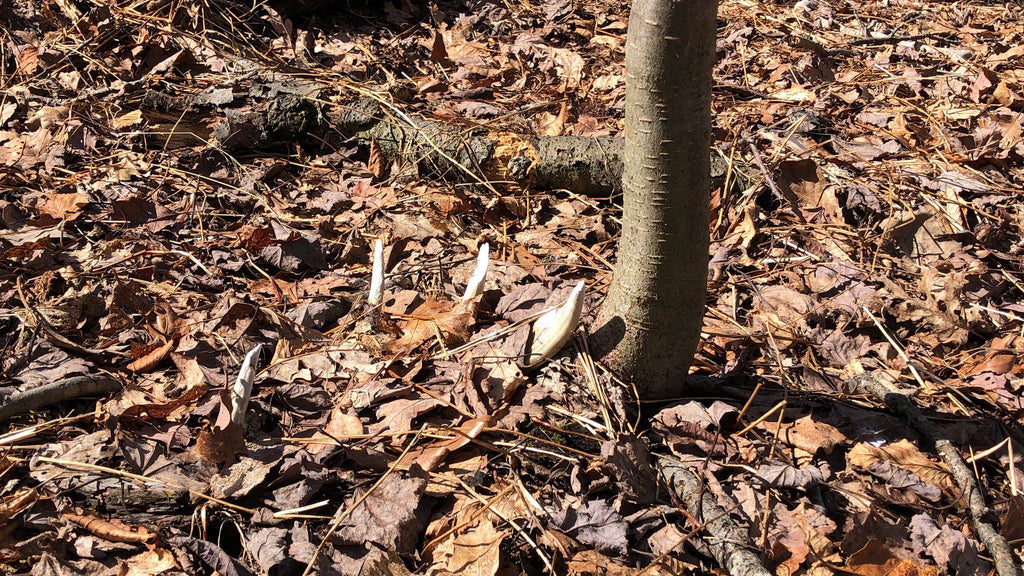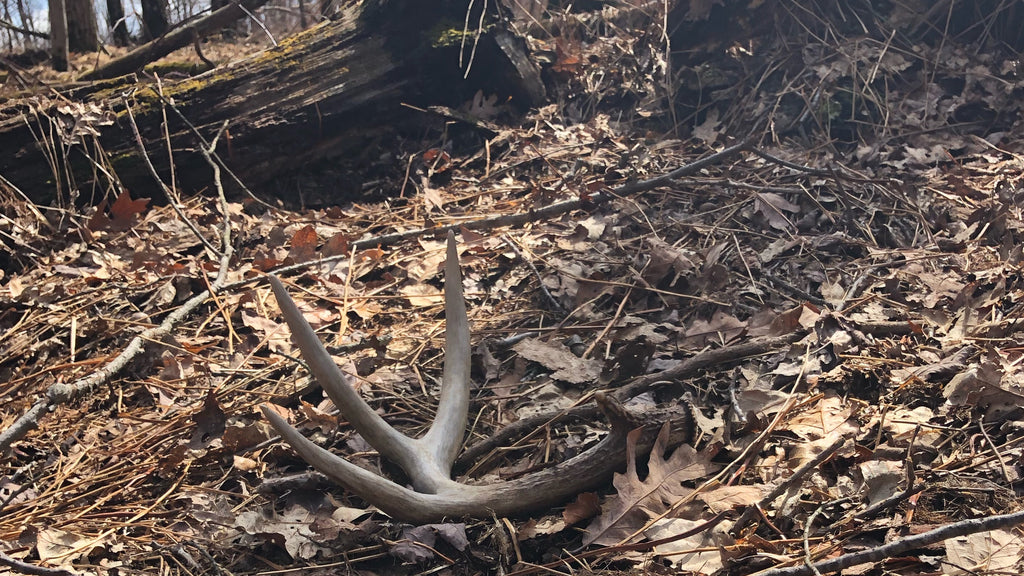Throughout angling history, the Musky has had a reputation as “the fish of 10,000 casts.” Shed antlers have a similar reputation because finding them is often almost like fishing for a ghost. But even muskie anglers have found methods to lower their cast count.
The first shed I ever stumbled upon happened to be a random find. I was a ten-year-old kid wandering around with my BB gun, sharpshooting starlings. I just about tripped over the tines before I saw it. I’d later discover that intentionally finding sheds isn’t so easy. But since that first discovery 24 years ago, I’ve gained much understanding of annual whitetail behavior.

There’s no magic bullet for easy shed hunting other than plain old worn-out boot leather and sore legs. But obtaining knowledge about the specifics of your deer herd and understanding general deer behavior will put more antlers into your pack.
Big Woods Shed Hunting

Like live-action hunting in the big woods, shed hunting in that setting is the most challenging type. The terrain is unforgiving, and the landscape is vast. Often a find in the big woods may seem random. But enough time in the woods will teach you that sheds hiding in seemingly random locations are actually in places that serve a purpose for specific deer.
-
Ridgeline Pinches
Ridgeline pinch points are synonymous with the term “military crest.” They are a bona fide place to find antlers between feeding areas or bed-to-food patterns. Keep a close eye out for slight knolls on the hillside directly below the pinch. Small landings make ideal bedding for traveling bucks.
-
Transition Zones
Transition zones are corridors of colliding natural features, otherwise called hard or soft edges. A simple example would be where a stand of conifers meets a stand of oak trees. Shed hunting in these zones can be very productive. Here are two standard transition zones you might encounter in a big woods setting:
Secondary clear-cut growth
A clear-cut in an old forest will allow light to enter the inside edge of mature timber left standing. Within two years, you’ll notice a difference in the stem count on that edge. Often, the clear-cut is still in a baby growth stage and hasn’t taken root. But the undisturbed ground, maybe less than 50 yards wide around the edge of the clear-cut, will have an overabundance of thick browse.
Riparian Areas
Riparian country is land that lies between a river system and the surrounding uplands. These areas are excellent deer funnels, as they provide them with a sense of security. Wind and thermal currents cater to a deer’s advantage, especially where there are oxbows. An oxbow is an isolated peninsula, or mushroom-shaped piece of land, formed when a river makes a long sharp bend. It almost creates, and Oxbows are prime buck bedding habitat, and shed hunting them can be very rewarding.
-
Feeding Areas
All shed hunters should pay close attention to feeding areas. Whitetails spend a significant amount of time with their head down while they’re browsing, making their munching grounds an unfaltering place to find sheds. So what about big woods bucks? Deer could be feeding literally everywhere. In the big woods, there’s nothing better than discovering rooting areas where deer have been digging up fern bulbs. Those dug-up patches of ground are easy to spot from a far distance, and following them will often lead to an antler find.
Shed Hunting Agricultural Land
Shed hunting agricultural areas means shed hunting on private land for most. However, several strategies have also been unwavering for me on public land and are worth mentioning.
- Mid-Field Fingers
Following the common transition zone theme, mid-field fingers are just that. These transition zones are narrow strips of timber or weedy vegetation that jut out into a field. They aren’t unlike a jetty of rocks in the ocean. If you’ve studied shed hunting articles, you’re probably well aware that habitat like this is worth the hype.
-
Utility Cutting
Gas lines, power lines, and pipelines all have a standard management plan, and that plan is to mow them to the ground. Lucky for us, that mowing doesn’t take place every single year. Between cutting years, utility lines become choked with brush that creates perfect bedding cover. Without a doubt, you’ll find sheds if you walk one or two of these features.
- Creek Bottoms
Harsh weather causes deer to seek protection cover. In ag country, there’s not much that can compete with a creek bottom for security from winter weather! High wind and heavy snow are hard to get away from in the middle of a giant field. Creek bottoms are protected and almost always have thermal cover surrounding them. They are a favorite wintering area for all deer, and while not 100% guaranteed, creeks are a sure-fire way to secure a few pieces of white gold.
You know the old saying….”MILES FOR PILES”. Get outside this spring, stretch your legs, and use the info in this article to find a few antlers. And if you find yourself stuck indoors, scratch your itch by watching the video above. A special trip to Iowa to walk our friends farm!
Author: Aaron Hepler, Exodus Black Hat Team Member










